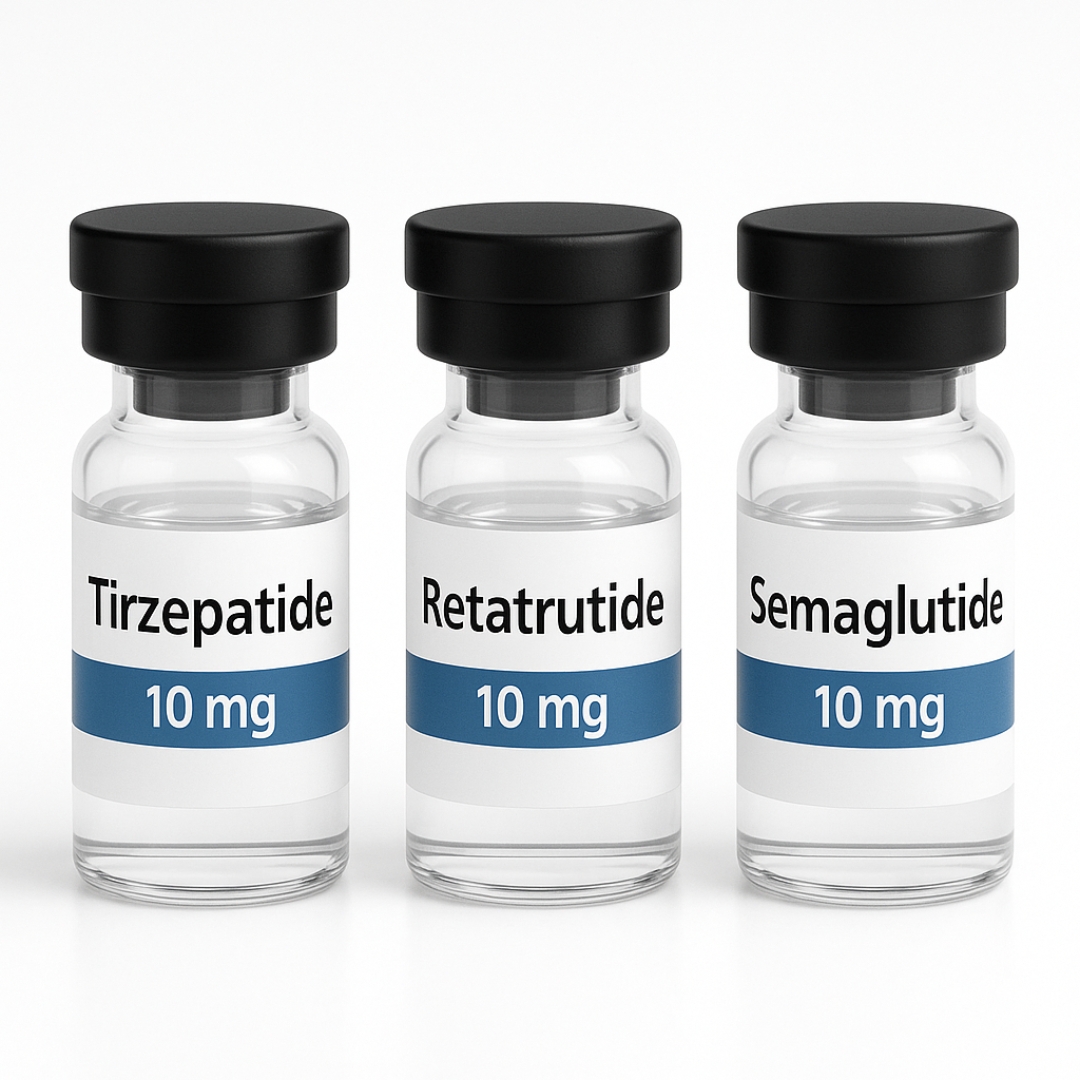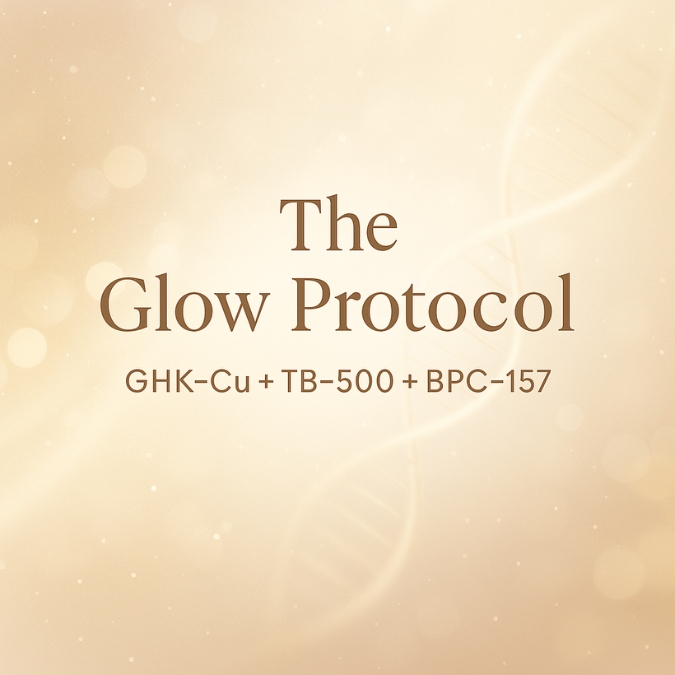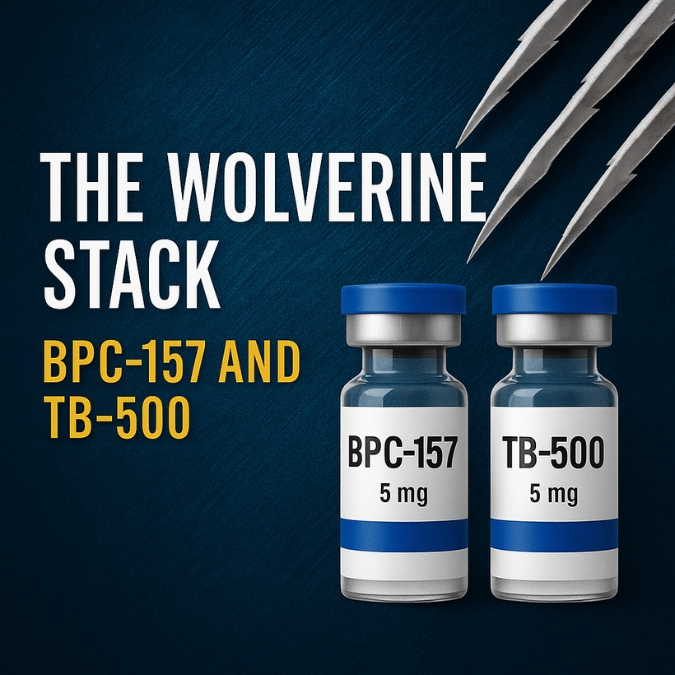
If you’ve been following the world of advanced weight-loss medications, you’ve probably noticed a growing list of names: Semaglutide, Tirzepatide, and the newer Retatrutide. Each has its own brand names, clinical trial data, and reported benefits. For patients and clinicians alike, the naming can get confusing – but the distinctions are worth understanding.

The Glow Protocol is a research framework exploring three complementary peptide families — GHK-Cu, TB-500, and BPC-157 — within studies on cellular renewal, extracellular-matrix dynamics, and biological resilience. It examines three domains: Structure (collagen/ECM signaling), Traffic (cell migration & micro-circulation), and Protection (oxidative/inflammatory balance).

The Wolverine Stack pairs BPC-157 and TB-500 in a complementary combination that is widely discussed for promoting overall recovery and physical resilience. Inspired by its reputation for rapid revitalization, this stack is favored by performance enthusiasts and individuals who prioritize tissue wellness.

The demand for pharmaceutical-grade peptides explored for metabolic research has grown rapidly in recent years. Three notable examples — Semaglutide, Tirzepatide, and Retatrutide — have each attracted attention for their potential to support studies involving appetite regulation, metabolism, and energy balance.

PT-141, also known as Bremelanotide, is a peptide studied for its role in influencing neurochemical pathways related to arousal and motivation. Unlike agents that act primarily on vascular mechanisms, PT-141 interacts with the melanocortin receptors in the brain’s hypothalamus — the region associated with sexual behavior, mood, and desire regulation.
Originally developed during studies on pigmentation peptides such as Melanotan II, PT-141’s secondary effects on mood and libido have made it an important subject of modern research into neurological and behavioral pathways influencing desire.

At EU Pharmaceuticals, every compound is produced through a pharmaceutical-grade manufacturing process. This ensures consistent purity, verified quality control, and dependable batch uniformity — the foundation for reliable laboratory results.

The following table presents approximate active half-life data for selected research compounds. Information is provided for educational and laboratory reference only and is not intended for medical or dosing guidance.
| Compound / Material | Approx. Active Half-Life |
|---|---|
| Oral Compounds | |
| Anadrol / Anapolan50 (Oxymetholone) | 8–9 hours |
| Anavar (Oxandrolone) | 9 hours |
| Dianabol (Methandrostenolone) | 4.5–6 hours |
| Methyltestosterone | 4 days |
| Winstrol (Stanozolol, oral) | 9 hours |
| Depot / Injectable Compounds | |
| Deca-Durabolin (Nandrolone Decanoate) | 15 days |
| Equipoise (Boldenone Undecylenate) | 14 days |
| Finaject (Trenbolone Acetate) | 3 days |
| Primobolan (Methenolone Enanthate) | 10.5 days |
| Sustanon / Omnadren | 15–18 days |
| Testosterone Cypionate | 12 days |
| Testosterone Enanthate | 10.5 days |
| Testosterone Propionate | 4.5 days |
| Testosterone Suspension | 1 day |
| Winstrol (Stanozolol, injectable) | 1 day |
| Common Ester References | |
| Formate | 1.5 days |
| Acetate | 3 days |
| Propionate | 4.5 days |
| Phenylpropionate | 4.5 days |
| Butyrate | 6 days |
| Valerate | 7.5 days |
| Hexanoate | 9 days |
| Caproate / Isocaproate | 9 days |
| Heptanoate | 9 days |
| Enanthate | 10.5 days |
| Octanoate | 10.5 days |
| Cypionate | 12 days |
| Nonanoate | 12 days |
| Decanoate | 13.5 days |
| Undecanoate | 15–16.5 days |
| Ancillary & Reference Compounds | |
| Arimidex | 3 days |
| Clenbuterol | 1.5 days |
| Clomid | 5 days |
| Cytadren | 6 hours |
| Ephedrine | 6 hours |
| T3 (Triiodothyronine) | 10 hours |
All data are provided for laboratory reference and educational use only. Values are approximate and may vary depending on formulation and analytical conditions.

